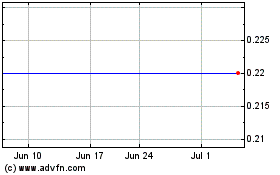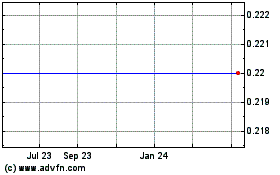Endologix, Inc. (Nasdaq: ELGX), a developer and marketer of
innovative treatments for aortic disorders, today announced a
response to the U.S. Food and Drug Administration (FDA) update
regarding Type III endoleaks with the AFX Endovascular AAA
System.
This press release features multimedia. View
the full release here:
https://www.businesswire.com/news/home/20191029005394/en/
Figure 1. Freedom from Aneurysm-Related
Complications (ARC) in the LEOPARD Trial (Graphic: Business
Wire)
Dr. Matt Thompson, Chief Medical Officer of Endologix Inc.
commented, “On September 28, 2017, the FDA issued a letter to
health care professionals (“HCPs”) regarding Type III endoleaks
after endovascular aneurysm repair (“EVAR”). On June 19, 2018, the
FDA issued an update to this letter to reinforce awareness of Type
III endoleaks with Endologix’s AFX Strata System. Subsequently, on
October 28, 2019, the FDA issued a further update as an FDA Safety
Communication in response to an abstract from the Kaiser Integrated
Health System, published in the Journal of the American College of
Surgeons (Rothenberg et. al.). In this most recent update, the FDA
notes that the data included in the abstract suggest that there may
be a higher than expected risk of Type III endoleaks occurring with
the use of AFX with Duraply and AFX2 endovascular grafts.”
Thompson continued, “The information from Rothenberg et. al,
contains retrospectively collected data on 603 patients treated
with the AFX Systems between 2011 and 2017 who had a 2.5%
cumulative Type III endoleak rate at 2 years. The objectives of the
study were described as to provide crude mid-term postoperative
outcomes with the Endologix AFX/AFX2 devices. The FDA noted
limitations with the data from Rothenberg et. al.in its October
28th update, including the small number of patients implanted with
AFX2 (32 patients), the results not being stratified by Type IIIa
and Type IIIb endoleaks, and the lack of a comparison of these
results to the results from other endovascular graft systems. In
our view, the small number of patients with AFX2 at 2 years (13
patients) prevents any clinically meaningful interpretation of
these findings. The FDA update provides certain recommendations for
patients implanted with AFX, including the need to undergo lifelong
yearly surveillance, a practice that is already detailed in the AFX
System’s instructions for use as well as in Endologix’s 2016 AFX
safety notice and is standard practice with all aortic
endografts.”
John Onopchenko, Chief Executive Officer of Endologix Inc.
commented, “Our current commercially available versions of the AFX
System: the AFX DuraplyTM and AFX2TM products, are manufactured
using a different ePTFE processing methodology than AFX Strata and
include additional product improvements. Endologix has a robust
approach to monitoring the performance of our products through the
use of multiple data sets that are benchmarked, compared against
other commercially available endografts, and analyzed for
concordance. These data include the LEOPARD trial (the only
randomized controlled trial of EVAR providing Level 1 evidence),
real world data from a vascular registry, our benchmarked MDR
complaint data, and meta-analyses of current literature. All of the
data sets we use are concordant and demonstrate, through the
prospective analysis of 62,461 patients with the AFX system, that
our AFX Duraply and AFX2 Systems currently achieve patient outcomes
equivalent to other contemporary commercialized endografts, when
assessed on an encompassing spectrum of clinical
complications.”
Mr. Onopchenko continued, “These data also support our
conclusion that changes to the ePTFE manufacturing process from
Strata to Duraply, along with the AFX IFU updates, are associated
with a reduction in the occurrence of Type III endoleaks for the
AFX System. This finding is different from the Rothenberg et. al
presentation at the American College of Surgeons, but we regard our
datasets as being robust, prospectively collected, and with active
contemporary comparators to set the results into appropriate
context. We are committed to data transparency, and the data
pertaining to our current analysis of the AFX System may be found
in our Annual Clinical Updates, which the FDA has reviewed and
subsequently referenced in its update:
https://endologix.com/wp-content/uploads/2019/10/MM2165-Rev-01-Endologix-2016-2019-AFX-Clinical-Update.pdf.
In particular, pages 33-48 detail the most recent results of the
LEOPARD study, in which there are no Type IIIb endoleaks with the
AFX2 system and no clinically meaningful difference in aggregated
patient outcomes when compared to other commercial endografts. We
remain confident that the AFX2 device is a safe and effective
product when used as indicated, and we will work diligently to
understand the outcomes presented by Rothenberg et. al as part of
our continuing commitment to ensure that the interests of all EVAR
patients, including those implanted with the AFX System, are being
prioritized and addressed.”
Figure 1 demonstrates freedom from aneurysm related
complications (ARC) in the LEOPARD trial. The LEOPARD trial is the
only randomized controlled trial of EVAR devices that randomized
455 patients to receive AFX Duraply / AFX2 (235 patients) or
contemporary comparator grafts (220 patients). The long-term
performance of the AFX/AFX2 Bifurcated (with the DURAPLY ePTFE
graft) is supported with 82.6% of subjects being free from ARC at
3-Years compared to the comparator group results of 79.8%.
Aneurysm-Related Complications (ARC), is a composite of the most
relevant EVAR-related outcomes. These included: peri-operative
death (≤30 days), aneurysm rupture, conversion to open surgical
repair, post-operative endoleaks, endograft migration (≥10mm),
aneurysm enlargement (≥5mm compared to 1-month CT), endograft
occlusion, and any reinterventions for device- or aneurysm-related
complications.
About Endologix, Inc.
Endologix, Inc. develops and manufactures minimally invasive
treatments for aortic disorders. The Company's focus is
endovascular stent grafts for the treatment of abdominal aortic
aneurysms (AAA). AAA is a weakening of the wall of the aorta, the
largest artery in the body, resulting in a balloon-like
enlargement. Once AAA develops, it continues to enlarge and, if
left untreated, becomes increasingly susceptible to rupture. The
overall patient mortality rate for ruptured AAA is approximately
80%, making it a leading cause of death in the United States. For
more information, visit www.endologix.com.
Cautions Regarding Forward-Looking Statements
Except for historical information contained herein, this press
release contains forward-looking statements within the meaning of
the Private Securities Litigation Reform Act of 1995. These
forward-looking statements generally can be identified by the use
of words such as “anticipate,” “expect,” “could,” “may,” “will,”
“believe,” “estimate,” “forecast,” “goal,” “project,” "continue,"
"outlook," “guidance,” "future,” other words of similar meaning and
the use of future dates. Forward-looking statements used in this
press release include, but are not limited to, statements regarding
the advisability of AFX patients undergoing at least yearly,
life-long follow-up, and Endologix’s intent to work diligently to
understand the presented AFX data (Rothenberg et. al.) as part of
its commitment to prioritize EVAR patients, the accuracy of which
are necessarily subject to risks and uncertainties that may cause
future events to differ materially and adversely from the
statements contained herein. Some of the potential risks and
uncertainties that could cause actual results to differ materially
and adversely include: future availability and sufficiency of data
supporting the benefits of EVAR, generally, and Endologix’s AFX
Duraply and AFX2 products, specifically; potential future adverse
data or other findings regarding the AFX Strata, AFX Duraply and
AFX2 products or other Endologix products; regulatory risks,
incuding regulatory risks related to AFX product approvals and
regulatory review and obtaining and maintaining approval of these
and other other Endologix products in our current and intended
markets; risks regarding conduct of Endologix’s clinical trials,
registries and other studies and the results thereof; reputational
and related commercial risks arising out of potentially adverse
data and perceptions regarding Endologix products and technologies;
and operational and financial risks that may arise as the result of
any adverse findings regarding Endologix’s products, or EVAR
generally (including potential loss of sales, and difficulties in
accessing the capital markets on acceptable terms or at all). Undue
reliance should not be placed upon the forward-looking statements
contained in this press release, which speak only as of the date of
this press release. Endologix undertakes no obligation to update
any forward-looking statements contained in this press release to
reflect new information, events or circumstances after the date
they are made, or to reflect the occurrence of unanticipated
events. Please refer to Endologix's filings with the Securities and
Exchange Commission including its Annual Report on Form 10-K for
the year ended December 31, 2018 and subsequent Quarterly Reports
on Form 10-Q, for more detailed information regarding these risks
and uncertainties and other factors that may cause actual results
to differ materially from those expressed or implied.
# # #
View source
version on businesswire.com: https://www.businesswire.com/news/home/20191029005394/en/
INVESTORS: Endologix, Inc. Vaseem Mahboob, CFO
(949) 595-7200
Endologix (NASDAQ:ELGX)
Historical Stock Chart
From Mar 2024 to Apr 2024

Endologix (NASDAQ:ELGX)
Historical Stock Chart
From Apr 2023 to Apr 2024
